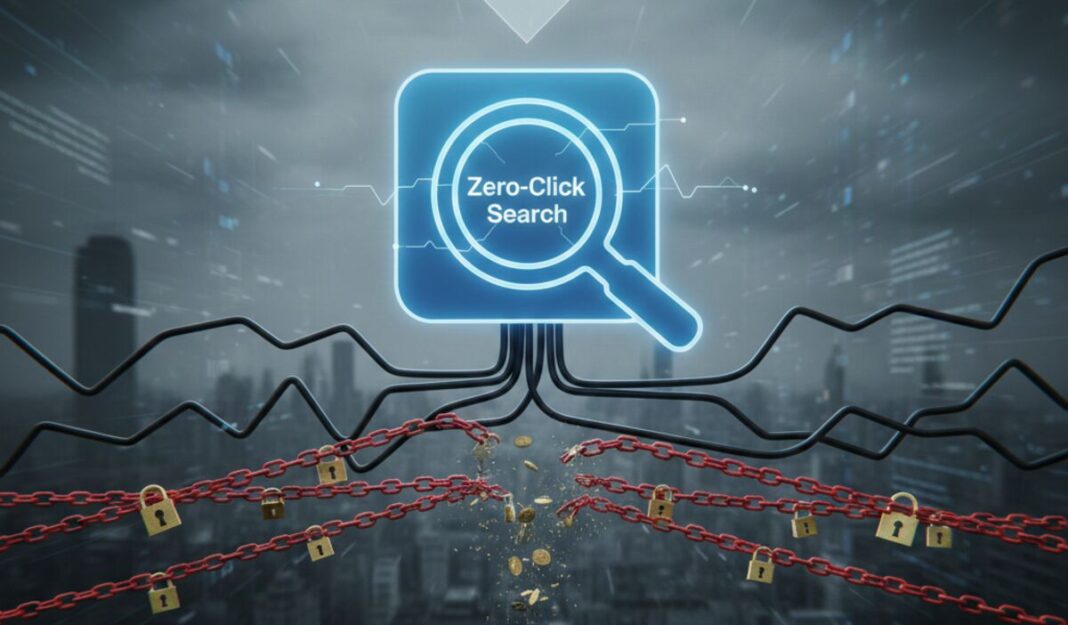The rules of the game have changed. If you make a living from organic search and affiliate links, you’re probably feeling it already. The rise of zero-click search and AI platforms that synthesize answers—think AI overviews and chatbots—has quietly hollowed out the old funnel. People are deciding what to buy long before they ever click your tracking link. That’s the blunt truth.
The Vanishing Clicks
Roughly six in ten searches now end without a click to an external site. That’s not a small shift; it’s a structural one. AI summaries pull together reviews, comparisons, and buying advice into a neat, platform-native answer. Users read that answer and move on. No click. No tracking pixel fired. And no commission.
The consequence of this is clear: Imagine doing the deep research, writing the long review, and then watching your influence be consumed inside someone else’s interface. You still shaped the decision, but the measurement system can’t see you. This is the frustration.
When Influence Becomes Invisible
This is where attribution breaks down. Last-click attribution used to be crude but serviceable: whoever got the final click got the credit. Now, a user can be influenced by your content inside an AI summary, then later navigate directly to the merchant and buy. The sale registers as “Direct.” You get nothing. It’s not that you don’t matter; it’s that the system can’t trace your role.
Consider this: an AI pulls your review into a summary. A reader trusts that summary, decides to buy, and later types the product name into a browser. The merchant records a direct sale. The affiliate who did the legwork is invisible. That’s the attribution nightmare.
Who’s at Risk, and who’s safer
Not every affiliate model is equally exposed.
- High risk: Content creators who publish reviews, guides, and comparisons. Your detailed research is exactly what AI engines digest. If your content regularly feeds those summaries, you’re in the line of fire.
- Lower risk: Coupon, cashback, and loyalty sites. These operate at the bottom of the funnel where transactional intent is high. People still need codes and platforms to claim rewards.
- Resilient: Interactive tools—price comparators, calculators, configurators. These are experiences an AI text summary can’t easily replicate.
So yes, some niches are more vulnerable. But if you depend on organic discovery and long-form content, you need to act.
A Survival Guide: Segment, Pivot, and Demand Value
You can’t just sit and hope the old model returns. There are three practical moves to consider.
- Build direct audience relationships
Stop putting all your eggs in Google’s basket. Start owning the audience. Email lists, social followings, and direct channels matter because you control the link and the message. Make content that invites engagement—multimedia, interactive pieces, short-form video, tools that require a click to use. These are harder for AI summaries to replace.
- Demand compensation beyond the click
If your content regularly shows up inside AI answers, you’re creating value that brands are benefiting from without paying. It’s reasonable—maybe even necessary—to ask for hybrid deals. Think media placement fees for visibility plus the usual commission for tracked conversions. You’re selling influence, not just clicks.
- Push for better tracking
Work with networks and brands to adopt modern tracking: server-to-server solutions and parameters that can attribute influence even when the click happens later. These aren’t magic bullets, but they help allocate credit more fairly when the customer’s path is messy.
New Metrics, New Mindset
Clicks will still matter, but they won’t tell the whole story. Start measuring things like branded search lift—did your content cause more people to search for the brand?—and impression share inside AI-generated responses. Those signals show influence even when the click is missing.
This is a moment to rethink what “performance” means. It’s messy. It’s uncertain. But it’s also an opportunity to move from passive income to a more diversified, resilient model.
If you’re a content affiliate, don’t wait until the checks stop coming. Experiment with owned channels, negotiate hybrid deals, and push for modern tracking. The landscape is shifting fast; adapt now or risk watching passive income evaporate.
What’s your experience been with zero-click traffic? Leave a comment below and tell us—have you seen conversions disappear into “Direct” sales? Follow us on Facebook, Twitter, and Pinterest for more practical tactics and real-world case studies.
Skims’ $5B valuation sparks affiliate attribution crisis. Here is what we know so far.
Sources:
- www.affiversemedia.com/zero-click-search-the-attribution-challenge-reshaping-affiliate-marketing-strategy/
- www.sparktoro.com/blog/2024-zero-click-search-study-for-every-1000-us-google-searches-only-374-clicks-go-to-the-open-web-in-the-eu-its-360/
- www.bain.com/insights/goodbye-clicks-hello-ai-zero-click-search-redefines-marketing/

Hello folk,
I’m here to provide you with tips, tricks, and guidance on how to join affiliate programs and monetize your sites or social media accounts. On the right of the site, you can find a list of categories. Just click on those that interest you and see the affiliate programs available. Join those that fit with your writing expertise and your target audience. If you like my posts, please give me a like here:
Facebook, X (Twitter), Instagram, Pinterest, Website, Contact us


